I almost hate to write this post. It's
déjà vu all over again.
Such was my reaction to a recent headline in the
Pueblo Chieftain:
"Two More Cows Found Mutilated."Eastern Colorado was central to the "cattle mutilation" meme of the 1970s. I was younger and wishing that one day I would be a newspaper reporter so that I could
really learn what was going on.
Later, after the furor died down, I did write for the (now defunct)
Colorado Springs Sun. And at one point I assigned myself a retrospective article about "mutilation madness" that eventually spawned a feature in dear old
Fate magazine.*
The
Sun version left out my youthful experience with a lodge of Thelemic ceremonial magicians who planned to use magick-with-a-k to find the so-called mutilators and collect the Colorado Cattlemen's Association reward money (which never was collected.)
I write "meme" for a reason, and the
Chieftain article illustrates it perfectly. The news media tend to follow these "rules" of reporting topics that are pre-judged to be non-serious.
1. Assume that these events are paranormal, inexplicable, or silly.
2. Treat anyone--such as a self-proclaimed UFO expert--as a legitimate source.
It happened in the 1970s, and it's happening now. The only part that is missing is the post-Vietnam War narrative in which crazed
Huey pilots conduct crazed nighttime mutilation missions to get the adrenaline rush that they got in 'Nam. (Think Iraq and give it time.)
When I did become a journalist, I decided that the reason that editors did not take the whole cattle mutilation narrative seriously was that
- it was rural
- it did not fit into a neat box (sports, crime, politics)
- it was rural
- it was difficult to cover, and there were no official spokespeople
- it was rural
- it was non-serious, "soft," involving UFOs and what-not.
Consequently, the reporters involved were not necessarily the A-Team. At the Colorado Springs
Gazette-Telegraph, the main reporter was a middle-aged feature writer, a friend of my dad's, who had mastered the art of being inconspicuous and inoffensive. She never rocked the boat and always wrote down what her sources told her. (She did have a more interesting life outside the newsroom, however.) Her stories were treated more as entertainment than as "hard news" -- and yes, the blatant phallicism of that term is entirely appropriate.
What strikes me about this newest story is the totally uncritical acceptance of the old 1970s narrative.
The mutilations are carried out with "surgical precision." Oh yeah? Did you ask any surgeons, veterinary or otherwise? Did you know that a cut in flesh, left to sit in the sun for a day or two, will swell and look smoother (more precise), even if made with canine teeth?
There is "no blood." Have you studied what happens to blood in a corpse, how it pools at the lowest point and coagulates?
And who is interviewed? Some UFO expert.
Who is not interviewed? An expert on four-footed predators. A specialist in veterinary necropsy (your local vet is not a specialist). An expert on narrative frames applied to inexplicable events, such as "
satanic panics, " witch hunts, and other folklore.
The last is perhaps the most important. The woo-woo factor, you know.
A couple of days after the Chieftain article, another piece appeared in the Denver Post:
"Wild Dogs Terrorize Eastern Plains."Delivery drivers have been stranded in their vehicles, cattle stampeded and stockmen have lost sheep, goats, lambs, calves and even pet dogs, county officials say. Do you suppose there might be a connection? There could be other explanations, equally mundane.
But once the woo-woo narrative frame is imposed, events are seen as strange and mysterious, revealing our fears about satanists, Vietnam veterans, or whatever the latest scary thing is.
* Chas S. Clifton, “Mutilation Madness,” Fate, June 1988: 60-70.Labels: Colorado, weirdness
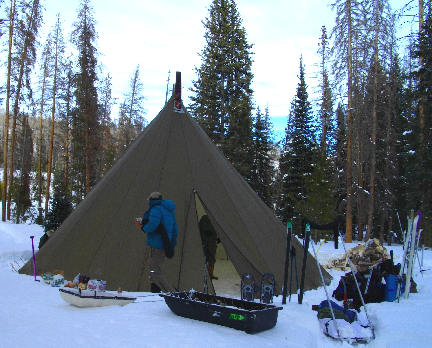
 Think of a typical American small-town parade: the Apple Queen and her court in a convertible, the honorary marshalls (some respected elderly couple) in an antique car, the high-school band kids' faces earnest and nervous under their
Think of a typical American small-town parade: the Apple Queen and her court in a convertible, the honorary marshalls (some respected elderly couple) in an antique car, the high-school band kids' faces earnest and nervous under their 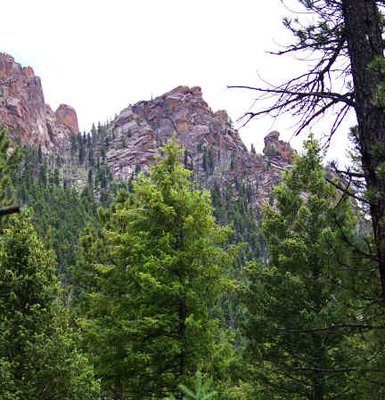

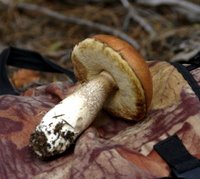
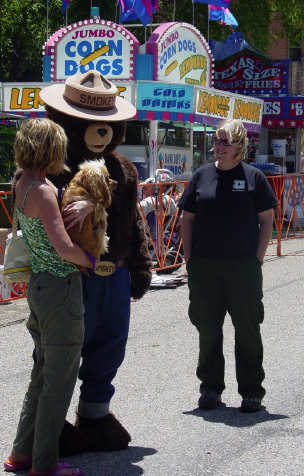


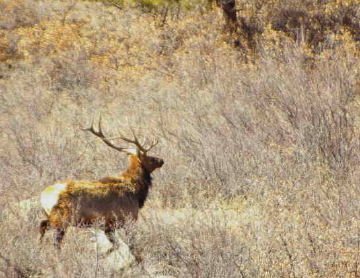
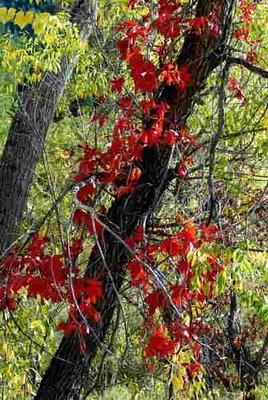
 The equinox is for apples. First M. and walk the small ravine that cuts through our land--that is where the feral apple trees grow.
The equinox is for apples. First M. and walk the small ravine that cuts through our land--that is where the feral apple trees grow.  Only one of the feral trees has borne really well, and I will need a longer pole than my garden cultivator to knock down the high apples. "Wait until after the first frost," M. suggests.
Only one of the feral trees has borne really well, and I will need a longer pole than my garden cultivator to knock down the high apples. "Wait until after the first frost," M. suggests.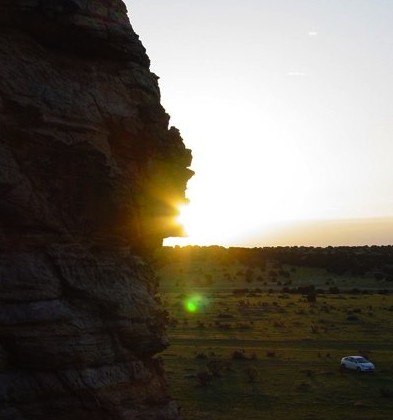 In the photo, the Beltane Sun (astronomical Beltane--May 5) has recently risen. When it appeared on the horizon, it fit right into the little notch in the rock just below its current position--an alignment that happens only on Beltane and Lammas.
In the photo, the Beltane Sun (astronomical Beltane--May 5) has recently risen. When it appeared on the horizon, it fit right into the little notch in the rock just below its current position--an alignment that happens only on Beltane and Lammas. Left: Martin Brennan viewing the sunrise.
Left: Martin Brennan viewing the sunrise. 


